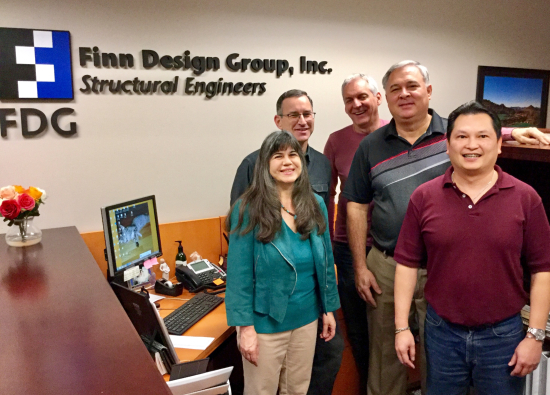Finn Design Group Provides Quality Structural Engineering
Finn Design Group Provides Quality Structural Engineering

Structural engineering firm Finn Design Group provides a variety of engineering services to clients throughout the United States. The firm has developed designs for buildings of all types, bridges, industrial facilities, houses, retaining walls, piers, monuments, equipment anchorage, and more.
"There's actually very little we haven't done," says Jeff Finn, President and Owner of Finn Design Group, which he founded near the end of 2004. "While our primary focus is structural engineering, we also provide some mechanical design. One particular niche of ours is the design of hospital bulk oxygen systems. We've designed new or replacement bulk oxygen systems for over fifty hospitals, including six Stanford facilities and fifteen Kaiser facilities."
Many people regard structural engineering as a kind of black box, a complex and mysterious system of hidden components, according to Finn. "To us, though, it's a fascinating and exciting challenge," he says. "We use science and math to design the often hidden structural system that provides vertical and lateral support for that which is exposed. Every project we do is different."
The bulk of the firm's work is preparing construction drawings and structural calculations. In order to offer national clients the speedy turnaround time they often need, Finn went through the process created by the National Council of Examiners for Engineering and Surveying (NCEES) to be recognized as an NCEES Model Law Structural Engineer. Having this national recognition enables quick licensing in other states through reciprocity. Finn currently holds Professional Engineering licenses in 21 states.
The firm often works for private clients, but it has also worked directly for some public entities, including the Cities of Pleasanton, Livermore, and Dublin. It also has Hacienda as a client, monitoring the movement of the Hacienda monument structures every five years to determine if there have been any unexpected changes that might indicate structural distress.
In 2005 and 2010 the firm used a conventional survey setup, then a state-of-the-art reflectorless total station, to monitor the Hacienda monument structures by measuring discrete points. The firm later switched to a 3D Laser Scanner system for the survey in 2015. The new system uses a 3D computer model that allows for the measurement of the entire structure, not just a few discrete points. It also eliminates much of the user-variability present in a conventional system. "Switching to the 3D system, which didn't exist when we first began the monitoring program, was a success that benefited our client," notes Finn.
Seeking variety in clients and projects is one reason why Finn Design Group has thrived. "While it's stimulating to have such variety, it's also been a boon from a business-stability standpoint as it gives us a leg up if and when the markets change," notes Finn. "For example, in 2006 when the housing market collapsed and our residential development clients disappeared, we were able to shift our focus to industrial facilities and health care. Now residential development is back, and business is good. We had a record year in 2018."
The firm, which started at Hacienda, recently returned in order to maintain a Class A space in Pleasanton that was also affordable, according to Finn. Finn Design Group plans to expand beyond its five full-time employees and is seeking engineers who had a structural specialty with 0-5 years of experience.
For more information about Finn Design Group, please visit www.finndesigngroup.com.




